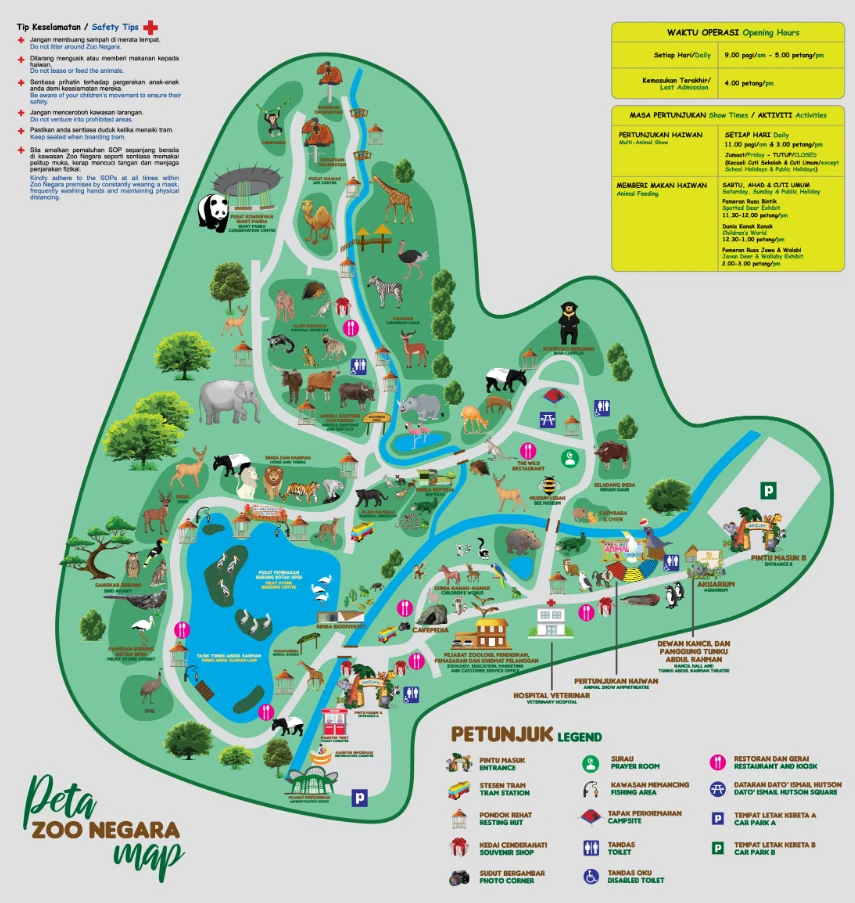National Zoo of Malaysia Map (2023 – 2022)
Location: Ampang, Malaysia
Years Active: 1963 – Active
The National Zoo of Malaysia Map is your ultimate guide to exploring Zoo Negara’s rich wildlife and interactive spaces.
The National Zoo of Malaysia, also known as Zoo Negara, spans over 110 acres and houses more than 5,000 animals across 400 species. Located in Kuala Lumpur, it is managed by the Malaysian Zoological Society and includes exhibits such as the Giant Panda Conservation Centre, emphasizing education, conservation, and recreation.
From spotting the majestic Malayan tiger in the Big Cat Zone to catching glimpses of the playful Humboldt penguins in their icy habitat, this map highlights every corner.
Don’t miss the Giant Panda Conservation Centre or the Butterfly Garden. With clear directions to the Savanna Walk and Reptile House, your zoo adventure promises endless discovery.
National Zoo of Malaysia Map 2023

Printable National Zoo of Malaysia Map PDF 2023
National Zoo of Malaysia Map 2022

FAQ
What is the biggest zoo in Malaysia?
The biggest zoo in Malaysia is Zoo Negara (National Zoo), located in Kuala Lumpur. It covers over 110 acres and hosts more than 5,000 animals representing over 400 species, making it the largest and most diverse zoo in the country.
Does Zoo Negara still have pandas?
Yes, Zoo Negara still has pandas. The zoo’s Giant Panda Conservation Centre houses a pair of pandas named Xing Xing and Liang Liang, on loan from China as part of a conservation agreement. These pandas remain a central attraction at Zoo Negara.
What are the animals in Zoo Negara?
Zoo Negara houses over 5,000 animals across 400 species, including Malaysian native species and international wildlife. Key animals include Malayan tigers, orangutans, Asian elephants, and the famous giant pandas. Other exhibits feature lions, giraffes, reptiles, and diverse bird species.
How many zoos are there in Malaysia?
Malaysia has over 20 zoos and wildlife parks, including major ones like Zoo Negara, Taiping Zoo, and Malacca Zoo. These facilities contribute to conservation, education, and tourism by showcasing a variety of native and exotic species across the country.
